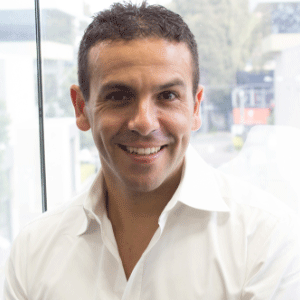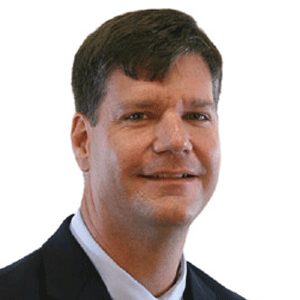THANK YOU FOR SUBSCRIBING

The Future of Technology in Unconventional Shale Production
Jeff Foster, President & CEO, MicroSeismic


Jeff Foster, President & CEO, MicroSeismic
In the current price environment surrounding the Oil and Gas industry, operators are looking for ways to cost effectively maximize drainage from unconventional reservoirs. Advancements over the last 15 years in directional drilling and hydraulic fracturing have transformed low quality resources into economically viable sources of energy. However, while E&P companies have increased production rates, the recovery rates and decline curves remain poor in comparison to conventional wells.
Predicting and maximizing estimated ultimate recovery (EUR) is crucial for moving from efficient to effective unconventional shale completion operations, and techniques for predicting EUR vary from operator to operator. Some calculate EUR by extrapolating from initial production rates while others may apply decline curve trends from one play to another. Each method has its advantages and each its caveats. Operators need six months to one year of production history to truly estimate EUR. However, extrapolation of initial production rates rarely tells the whole story. Some operators may not have sufficient data to understand the longer-term behavior, and though traditional decline curve analysis has proven effective for conventional reservoir production prediction, we are seeking different, more realistic methods to apply to unconventional shale reservoirs.
“As shale plays mature, it is becoming increasingly apparent that many well programs will need to be recompleted with new techniques”
The variability in unconventional shale plays is leading to unpredictable performance from wells. Therefore, as an industry, we must realize that understanding the composition and behavior of the target geology during frac’ing is essential to hit the “sweet spots” and will ultimately result in maximizing the amount of recoverable reserves.
One of the most important concepts that I believe needs to be fully appreciated is that every well faces a unique set of circumstances. Well and stage spacing is at the forefront of maximizing the production and economics of each completion. We need to evaluate each distinct well to understand the relationship between EUR and well spacing, stage spacing, lateral lengths and orientation to better optimize completions for each well. Services are needed
Today, about 62 percent of all wells frac’d in the U.S. are horizontal wells. In an effort to reduce costs, E&P companies are “factory mode” drilling these wells, which means they are using identical well spacing, orientation and frac’ing techniques for every well. It is a one-size-fits-all approach that may keep costs low by shaving days off of the drilling process, but is failing to adequately deplete the reservoir.
Only about 10 percent of gas-in-place and 5 percent of oil-in-place is being recovered today. In fact as much as 25 percent to 35 percent of “factory mode” drilled wells do not even produce. Simply put, though this method has allowed for rapid field development, it is yielding lower productivity than expected, which is driving the need for efficiency gains and improved recovery methods.
The industry is facing a paradox as it strives to maintain high efficiencies and low costs, while looking to technology advancements to improve recovery factors. The bottom line is technology development should be tailored to the unique production characteristics of the reservoir, which will increase recovery. Look for engineered completions designs to take the lead; these will entail optimizing individual stages and wells to maximize production as opposed to the standardized stage completion methods currently used. This is a more efficient and effective approach which will drive the future of our industry.
Forthcoming technology solutions must offer results that are achievable and credible. Multi-disciplinary technical services that address the needs of geophysicists and geologists, as well as the needs of geomechanics, completions, production and reservoir engineers are ideal. These disciplines are interdependent and require an integrated understanding of geologic controls to interpret production behavior for future success.
Going forward, the industry will continue to develop technology to increase effectiveness for completions operations and production enhancement. As we develop the science and technology to interpolate initial production and estimated ultimate recovery (EUR) in the shale plays, we will be more knowledgeable in where we place wells vertically and laterally; we will complete them with more confidence and more success. Also look for real-time evaluation methods to determine how each stage is performing and enable real-time changes to optimize outcomes.
As shale plays mature, it is becoming increasingly apparent that many well programs will need to be recompleted with new techniques. For wells that were monitored and evaluated using microseismic technology during the initial fracturing, operators will have a quantifiable advantage. During the re-frac program they will have a much better understanding of the geology and what did and did not work previously.
Real-time evaluation of these re-frac programs will ensure that frac coverage area goals are achieved. We can also expect to see a greater use of data acquisition tools that will help with completions engineering and design. And although LWD tools are valuable in the oilfield, it is likely that less costly, non-intrusive technologies will emerge that do not enter the well, such as microseismic geophones, electromagnetics, and offset well fiber sensors.
As 2014 comes to a close, I am optimistic that we are closer than ever to successfully understanding how to forecast and maximize EUR. The industry is continually developing technology and solutions to make better real-time decisions while drilling and completing its wells, ultimately reducing the finding and development costs and maximizing recovery.











